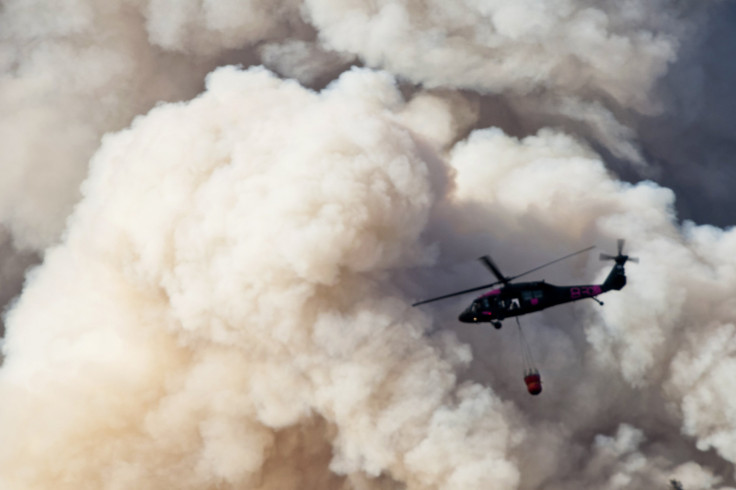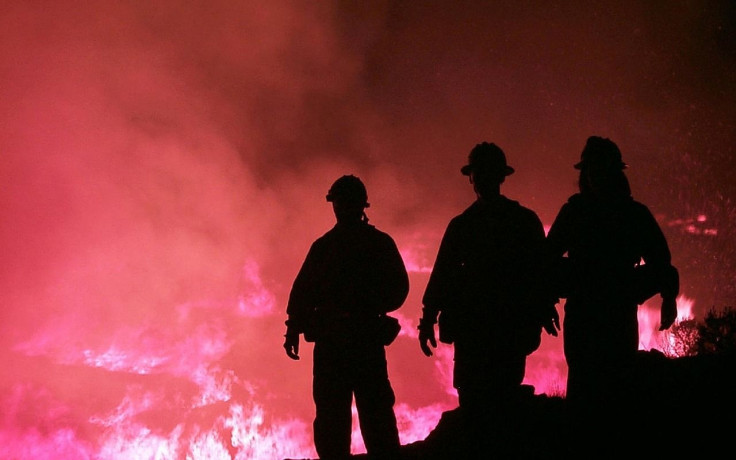Wildfire Smoke Does This To Your Body So Beware

It's a well known but horrifying fact that most of the people who die in a fire at home or building aren't first killed by the searing flames. They're first asphyxiated to death by the choking and toxic smoke clogging their airways and lungs.
And, yes, the same holds true for those killed by the monstrous and blinding smoke from a raging wildfire. Toxic smoke inhalation in both scenarios cause more fire-related deaths than do the fires themselves.
Wildfire smoke is every bit as deadly as the toxic smoke emitted by a burning house or building. A fire inside a structure releases toxic gasses such as hydrogen cyanide from burning plastics and phosgene gas from burning vinyl. Poisonous carbon monoxide (CO) is the most common toxic gas released during an indoor fire.
Wildfire smoke, while not having as many toxic chemicals as those found in an indoor fire, overwhelms by its sheer volume. It consists of water vapor, carbon dioxide, carbon monoxide, nitrogen oxides, hydrocarbons, trace minerals and particulate matter or PM. There are also several thousand other compounds present in wildfire smoke. Scientists also refer to wildfire pollution as particulate matter pollution (PM pollution).
PM pollution is the biggest public health threat in the wake of a wildfire. These microscopic-sized particles from wildfires can travel thousands of miles in the air. People within a 25-mile radius of a wildfire face serious health risks for up to two weeks after the fire.
The greatest danger in a forest wildfire is PM, which we usually associate with industrial and motor vehicle air pollution. Exposure to high concentrations of PM such as in a forest fire can worsen lung and heart conditions, significantly affect the quality of life and increase deaths and hospital admissions.
PM2.5, which is microscopic in size, is the most dangerous form of PM to human health. When we inhale it, there's a good chance PM2.5 will land in the deepest recesses of our lungs to impair breathing. PM2.5 is also known as fine particulate matter. Its size of 2.5 micrometers is 1/400th of a millimeter.

There's also a link between air pollution and the mental health of children. Studies show particulate matter seems to trigger more depression, anxiety and even suicidal tendencies in the days after a fire when poor air quality is prevalent.
Wildfire smoke will also spread dangerous pollutants such as carbon monoxide, formaldehyde, benzene and acrolein. The 2019 Amazon fires ejected massive amounts of carbon monoxide into the air. NASA said the CO from the fires was clearly detectable by satellites.
The U.S. Environmental Protection Agency (EPA) said the effects of wildfire smoke inhalation include eye and respiratory tract irritation and serious disorders affecting the lungs and heart. The more common but somewhat milder symptoms of wildfire smoke inhalation and exposure to particulate matter post-fire include: trouble in breathing, wheezing, asthma attacks, rapid heartbeat, persistent cough, phlegm buildup, bronchitis and chest pain.
The more serious health effects of smoke and particle exposure include:
- Pulmonary inflammation
- Reduced lung function and lung disease
- Aggravation of preexisting respiratory and cardiovascular disease
- Premature death
Published by Medicaldaily.com



























